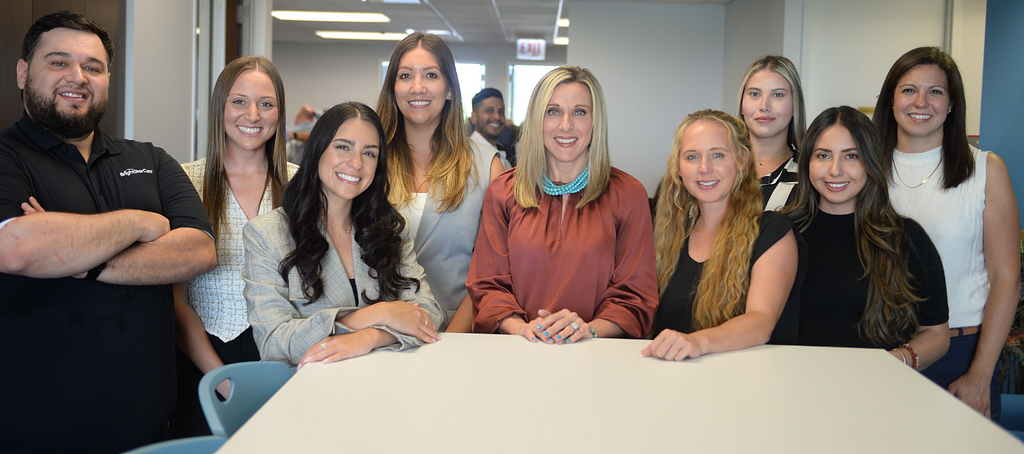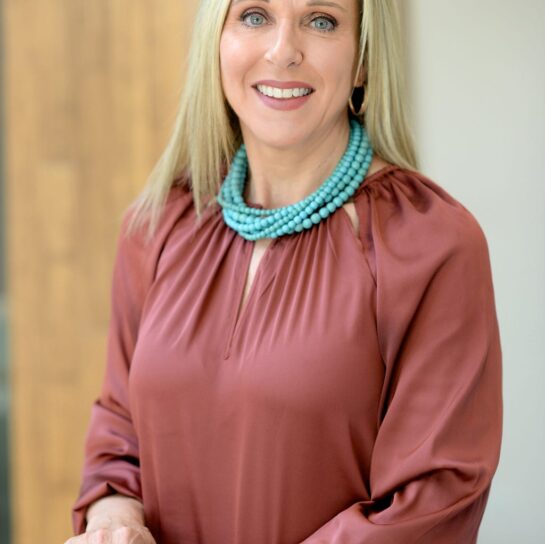Breaking the Marketing Mold: Teresa Celmer Of BrightStar Care On 5 Innovative & Non Traditional Marketing Strategies That Can Engage Audiences Like Never Before
An Interview With Chad Silverstein
Lifecycle Marketing Strategy — Leveraging HubSpot and marketing operations are material investments with a high impact. Discipline around analysts, campaign planning and full lifecycle marketing experts delivers strong LTV.
Traditional marketing methods are no longer sufficient in today’s dynamic and fast-evolving market. To truly engage and captivate audiences, businesses need to think outside the box and adopt innovative and non-traditional marketing strategies. What are these strategies, and how can they transform audience engagement? I had the pleasure of interviewing Teresa Celmer.
Moved by the vision to enrich lives throughout the home care journey, Teresa Celmer came to BrightStar Care in 2019 and now serves as Chief Marketing Officer. Her multi-faceted marketing career expanded into franchising where leading both the national strategy and the hyper-local marketing engine is critical to business growth. Recognized as one of the 50 CMO Game Changers in the franchise industry by Entrepreneur, Teresa is among the most influential men and women in the franchising industry who are representative of the all-important marketing role.
Thank you so much for joining us in this interview series! To start, could you share when and how you got started in marketing?
My first job out of college was with Bally, the gaming division where I marketed slot machines and video poker — think event marketing, PR, and robust product launches! Fast forward through varied leadership roles at Fellowes Office Products, Bosch Power Tools and Ace Hardware Corporation. Ace is where I learned the art and science of building a national brand while gaining my sensibilities around franchising. My passion for local owner success truly took flight here.
What has been the biggest shift in the marketing industry and can you give us an example of how it impacted you?
The marriage between data and technology gives marketers unlimited possibilities to drive revenue and cultivate engagement across multiple audiences. BrightStar Care’s entrepreneurial culture gave me a runway to explore platforms that would streamline the franchisee marketing efforts and deliver desired business outcomes.
Two significant examples come to mind. SOCi is a partnership I brought over from Ace. Social media advertising, reputation management and business listings all live under “one hood” which simplifies and amplifies local franchisees marketing efforts. HubSpot is another partnership we have been cultivating for months in preparation for full roll out. Tracking all consumer touchpoints through to customer conversion because our ability to engage throughout the entire CX journey will deliver on our business goals — Be America’s Most Trusted Home Care Brand, the Preferred B2B Partner and of course, recognized as an employer of choice…because people are our products.
Can you explain why it’s essential for businesses to break away from traditional marketing and embrace new strategies?
I learned early on in my career that ‘status quo’ will never get you where you need to go. We must be comfortable being uncomfortable. When we are flipping plans on their side, testing new concepts, and learning from these experiences, we are on the right track. And of course, the franchise brand must rely on data-driven tests to prove out the new way of thinking before scaling.
I would say the reference to “traditional” requires caution. Or let’s simply call it offline. It depends on audience behaviors and preferences. Doing something because we’re attracted to this “new shiny object” does not always work. Case in point — our video media mix. We were 100% linear 5 years ago; now we invest heavier across multiple OTT networks and are testing YouTube. With 370M impressions from Linear, it’s challenging to introduce channels that are more targeted at 3X the CPM. And we’re exploring event marketing, OOH and radio to ensure diversity delivers performance.
Could you share and briefly explain the first major change you made to break the trend of traditional marketing that was not so common?
The most significant change was moving away from 100% linear and adding OTT to the mix. Key stakeholders were hesitant because performance was strong, so it involved meticulous data analysis and optimism toward change. EQUALLY significant was our messaging strategy, which needed a change during & after the pandemic. The workforce shortage hit the home care industry hard. The new TV spot emphasized the value of “staying home” to attract consumers AND to attract an audience of caregivers & nurses seeking a career with BrightStar Care. Dual messaging proved itself out quickly.
What specific results did you see after implementing this change?
Web traffic to our main website and the career site improved; phones were ringing; and the multiple revenue streams produced results because the local owner could say YES to serve new customers.
How do you ensure that these new marketing strategies resonate with your target audience?
We conduct brand health studies twice a year to measure unaided & aided awareness, consideration, word of mouth, brand perceptions, etc. Our NPS & eNPS surveys are mandatory and always on so feedback from customers and employees fuel the business operations and marketing plans.
We draft off these insights to lean harder into our differentiators, and this makes for a more dynamic and effective content strategy. Ditto on what can be realized at the local marketing level as we push down refined content for local level use.
Can you share an example of something you tried that didn’t deliver expected results or ended up ended up becoming a financial burden, and what you learned from that experience?
The PPC strategy was “doing OK” but we experienced volume decline and CPLs increase. Simultaneously we changed agency partners last year, and piloted cohorts to “do no harm” as we shifted dollars and effort toward a heavier non-brand strategy with more white-glove service at the local level. It was messy, contentious and had spotty performance throughout the launch. As you know, no market is the same.
Now, we are in a stronger position yet there is still more work to be done. Earlier this year, we formed a direct relationship with Google and balanced our agency relationship to work in unison toward best practices. PPC remains challenging and alternative lead gen efforts are in testing mode. The big ah-ha remains with our SEO strategy. We’ve upgraded our agencies, strategies and the focus on national and local plans because CRO optimization is the top priority.

Great. Now, let’s dive into the heart of our interview. Could you list “5 Innovative & Non Traditional Marketing Strategies That Can Engage Audiences Like Never Before”?
Looking at the channel impact on the home care journey relative to spend, my 5 strategies work in unison for a full-funnel approach.
1. Video — Linear remains germane to core with CTV and YouTube reaching new audiences.
2. SEO — Moderate spend and high impact on CX, this is our #1 focus.
3. Social — Upper and mid-funnel with Meta and LinkedIn.
4. Lifecycle Marketing Strategy — Leveraging HubSpot and marketing operations are material investments with a high impact. Discipline around analysts, campaign planning and full lifecycle marketing experts delivers strong LTV.
5. The Slush Fund Strategy. Set aside dollars to embrace new, innovative approaches.
What challenges might companies face when transitioning away from traditional marketing strategies, and how can they overcome them?
In my opinion, the challenges center around one theme — sufficient resources. New media costs, campaign management, creative executions, the tech stack, analytical expertise, and of course, people. Whether in-house or agency partners, having the right resource strategy includes robust marketing operations.
In lieu of a massive changeover, conduct pilots. Let the data and process run its course. And with refinement will come learnings and scaling. And ROI.
Your dashboards need a storyline. Build a communications plan where the narrative speaks clearly to key stakeholders and the business outcomes.
How do you measure the success and ROI of these new marketing strategies?
New programs are treated differently. We set up cohorts and compare performance against the control group. When key indicators reflect a consistently positive outcome, we expand to more cohorts. When the results are inconsistent, we embrace variability and divvy campaign components [A/B creative testing, media mix and CTAs] to learn more.
We provide transparency amongst key stakeholders including leadership and our franchisee advertising and marketing advisory committee. They are early adopters and advisors who help us pressure test the new strategies.
Looking forward, how do you see the role of innovative marketing evolving in the next 5–10 years?
Embracing the customer experience has always been the bedrock of great marketing. However, not all brands are intentional, and many have not made the effort to look forward as they are consumed with the “today.”
By evolving CX with a data-driven mindset, we can anticipate the future as behaviors and trends progress. At BrightStar Care, we know who our customers are through data mining; yet, the customer of tomorrow is different. The digital landscape, AI-driven insights and customer engagements open a new view of their paths to purchase and retention.
Simply, the analytical experts are walking the halls alongside the creatives who are engaged with the product development team, who are inspired by AI and machine learning. The customer ecosystem lives front and center.
What advice would you give to business leaders who are hesitant to move away from traditional marketing methods?
Set big goals. If you stay with the status quo, you are going backwards. Embrace new approaches because you must get comfortable with being uncomfortable to truly change the business.
Build the team. You are not alone on this journey; everyone must rally, even when there’s a degree of risk to manage. Hire and retain exceptional marketers who have ambition to take results to new heights.
Measure, measure, measure. If you cannot measure it, don’t do it. The data will be richer with more variable inputs.
Can you share any upcoming initiatives or plans you have for further innovating your marketing strategies?
Customer Analytics including LTV metrics to better understand customer segments, as this will fuel our long-term campaign strategy.
More robust online video expenditures to reach new audiences.
Content strategy to support quality clinical expertise while feeding SEO optimization.
How can our readers follow your work and learn more about your approaches to modern marketing?
This was great. Thank you so much for the time you spent sharing with us.
About the Interviewer: Chad Silverstein, a seasoned entrepreneur with over two decades of experience as the Founder and CEO of multiple companies. He launched Choice Recovery, Inc., a healthcare collection agency, while going to The Ohio State University, His team earned national recognition, twice being ranked as the #1 business to work for in Central Ohio. In 2018, Chad launched [re]start, a career development platform connecting thousands of individuals in collections with meaningful employment opportunities, He sold Choice Recovery on his 25th anniversary and in 2023, sold the majority interest in [re]start so he can focus his transition to Built to Lead as an Executive Leadership Coach. Learn more at www.chadsilverstein.com
Breaking the Marketing Mold: Teresa Celmer Of BrightStar Care On 5 Innovative & Non Traditional… was originally published in Authority Magazine on Medium, where people are continuing the conversation by highlighting and responding to this story.
